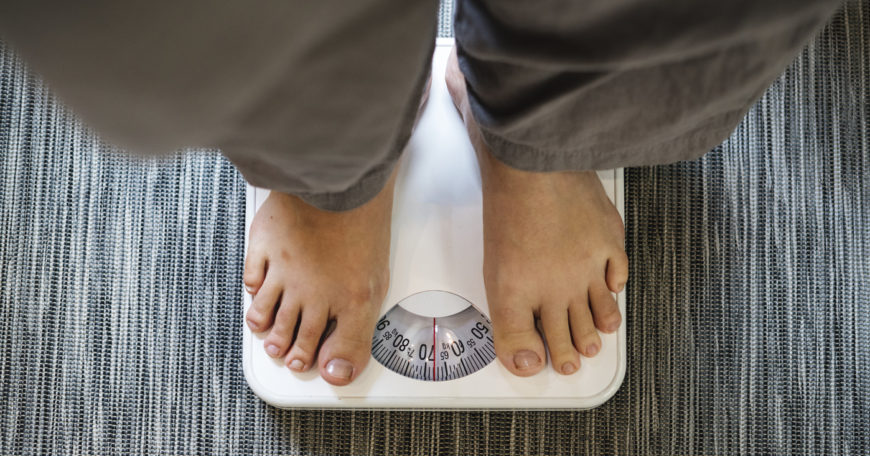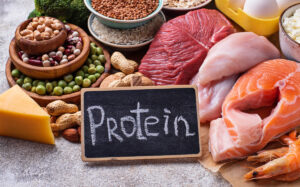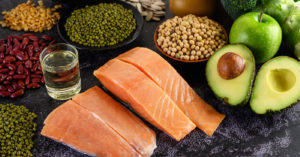Carbohydrates are one of the three major macronutrients that are essential for our survival. These compounds are considered the primary source of energy, with each gram offering 4 calories.
Because carbs comprise the big chunk of your diet, they’re often the target of several fitness and nutrition plans to lose weight, bulk muscles, and more.
However, researchers keep identifying amazing benefits to carbohydrate cycling, especially for individuals who want to lose weight.
To make things easier for you, we programmed a carb cycling calculator that provides you with a day-to-day plan on the number of calories you should be consuming, as well as the amounts of macronutrients.
While carb cycling is an excellent choice for a lot of people, some patients with medical comorbidities (e.g., diabetes, endocrine pathologies) must consult their primary care physician before starting this journey.
By the end of this piece, you will learn everything there is to know about carb cycling, as well as the role of carb cycling calculator.
The definition of carbohydrate cycling
As the name implies, carbohydrate cycling focuses on fluctuating carbohydrate intake in order to meet the body’s demands without overdoing it.
Several approaches to this pattern of eating exist, including daily, weekly, or monthly cycling. However, we recommend that you start with the daily cycling, as it’s the easiest to adapt to and won’t put your body in too much physiological stress.
Moreover, our carb cycling calculator will make it so much easier to precisely figure out the number of calories and carbs you need to consume per day.
The side effects of too much carbs
Weight gain
Today, the world is witnessing an obesity epidemic that’s spreading even in the underdeveloped countries. In fact, more people die annually from obesity-associated complications than from famine!
This is partially due to the higher portions of food that interfere with the brain’s biochemistry to increase your appetite.
For instance, fructose, which is commonly found in processed foods, is highly addictive and can increase your appetite for sugary foods.
In short, too much sugar is the number one contributor to the obesity epidemic.
However, this side effect is not strictly harmful to regular people as athletes such as mixed martial artists could also be subject to weight gain, which negatively impacts their performance, especially in professional competitions.
Increased risk of coronary artery disease (CAD)
Foods rich in sugar can increase the risk of cardiovascular disease due to oxidative stress. Additionally, chronically elevated blood sugar levels can damage the blood vasculature, further increasing the risk of coronary artery disease (i.e., heart attack).
Increased risk of type 2 diabetes
This one is no brainer.
Consuming too much sugar can precipitate type 2 diabetes, especially if other risk factors are present.
Risk factors for type 2 diabetes include:
- Obesity
- Blood hypertension
- High LDL, Low HDL
- Sedentary life
- Age over 45
- Family history of diabetes
Increased risk of cancer
In a large 2012 study, scientists found that added sugar can increase the risk of several cancer types, including esophageal cancer, pleural cancer, and digestive cancers.
Although the relationship between cancer and high sugar intake isn’t fully understood, scientists believe it’s the result of chronic inflammation and oxidative stress.
Nevertheless, more research is needed to fully comprehend the pathophysiology of sugar-induced cancers.
Acne
Regularly consuming foods that are rich in sugars can lead to frequent insulin spikes. As a result, the endocrine system stimulates androgen hormones’ production, which is a primary risk factor for developing acne.
In fact, some patients have noticed a significant improvement in their acne after cutting off sugar from their diet.
Takeaway
As you can see from this shortlist, regular consumption of carbohydrates carries numerous health adverse effects that could be fatal in some cases.
One logical approach would be to cut sugar from your diet altogether. In other words, adopting a severe form of the ketogenic diet in an attempt to lose weight and decrease the risk of the ailments listed above.
However, researchers found evidence that low-carb diets are extremely dangerous for the body, especially in the long run.
This leaves us with one innovative solution to this problem that’s been gaining massive traction over the past few years –carb cycling–.
The benefits of Carb Cycling
There are numerous health effects of carb cycling, including –and not exclusive to– the following:
Suppresses hunger
Carb cycling helps in the regulation of hunger hormones (e.g., ghrelin, leptin) to keep you satiated for longer periods. As a result, you will consume fewer calories, which leads to more fat loss.
Note that high-protein, high-fat meals are extremely effective at suppressing feelings of hunger relative to a high-carb diet.
Decreases insulin resistance
Consuming high-carb meals is associated with insulin resistance, which is a cornerstone pathological process of type 2 diabetes.
Fortunately, carb cycling helps sensitize the cells to the action of insulin, reducing the risk of glycemic dysregulation and diabetes.
This feature is especially useful for overweight individuals and those with diabetes risk factors.
Increases lipolysis (fat burning)
This is perhaps the most appealing benefit to follow a carb cycling diet.
You see, the cycling between low and high carb intake will put you in a state of partial ketosis, where your liver starts converting fatty acids into ketone bodies, which are then used to produce energy.
Keep in mind that in order to be in partial ketosis, your carb intake must be less than 50 grams during cycling days.
For this reason, some individuals prefer weekly cycling, as it allows their bodies to maintain the state of ketosis for longer periods.
Boosts performance
Unlike low-carb diets, carb cycling boosts physical performance since it provides the muscles with the crucial glucose molecules that ensure efficient muscular contraction.
We mentioned above that ketone bodies could also be used to produce energy; however, carbs are the only compounds that can be immediately accessed through the phosphagen system and the Krebs cycle.
How to reduce your sugar intake during carb cycling
Today, processed foods are found everywhere! It is practically impossible to go through the supermarket without finding products that were industrialized via artificial injection of sugar.
Here are a few tips to reduce your sugar intake:
After using the carb cycling calculator, you will have all the necessary information about the amounts of sugar you can consume.
To achieve those numbers, try to focus more on whole foods and avoid buying processed foods; read the label of every product you plan to buy and make sure it has balanced amounts of nutrients, vitamins, and minerals.
There are limitless health benefits to whole-food-based diets, as you’ll be left with fresh, nutrient-dense foods.
Foods with hidden sugar
Surprisingly, many foods that we don’t usually consider as rich in sugar contain high levels of carbs that could secretly damage our bodies.
Thankfully, many of these foods are natural, but we should always be aware of what we’re consuming, nonetheless.
Here is a list of food items that are rich in carbohydrates:
- Pasta Sauces
- Granola Bars
- Yogurt
- Instant Oatmeal
- Salad Dressing
- Breakfast Cereals
- Coleslaw
- Dried Fruit
- Ketchup
Frequently Asked Questions (FAQs)
What is carb cycling?
Carb cycling refers to an eating pattern that focuses on increasing and decreasing your sugar intake to achieve certain goals.
For instance, if you’re trying to lose weight, carb cycling allows you to reap the benefits of a low-carb diet while providing your organs with sufficient amounts of glucose to get you through the day.
Is there an optimal way to follow carb cycling?
As with many diets, carb cycling has several forms with lots of information that could be overwhelming for beginners.
For this reason, we recommend following a basic cycling pattern after getting the necessary information from our carb cycling calculator.
What are some good food choices for carb cycling?
The best foods to get your carbs from include natural, nutritious products that contain moderate amounts of artificial sweeteners and refined sugar.
A classic example would be natural vegetables and fruits, such as leafy greens, cauliflower, sweet potatoes, apples, bananas, kiwis, and watermelons.
Are there any side effects to carb cycling?
Most of the adverse effects associated with carb cycling are seen during the first few days since your body needs time to adapt.
Some of the signs and symptoms may include:
- Dizziness
- Headache
- Sleep disturbances
- Mood swings
- Lethargy
- Irritability
These symptoms disappear altogether after a few days.








